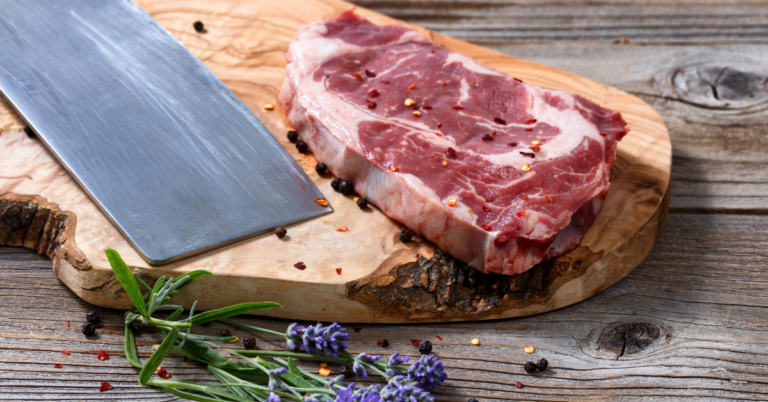Beef tallow might sound a bit old-school, but it’s making a comeback in kitchens around the world. So, what exactly is it? Essentially, it’s the rendered fat from beef, often seen as golden chunks or a creamy white block if it’s been processed a bit more. This fat has been used for centuries before vegetable and seed oils took over supermarket shelves.
Why is Beef Tallow Making a Comeback?
- Traditionally used for cooking, frying, and even skincare
- Provides a rich, savory flavor to dishes
- Stable at high temperatures, making it ideal for frying
- Contains fat-soluble vitamins like A, D, E, and K
- Long shelf life and can be stored at room temperature
When looking at tallow alongside modern fats like canola or sunflower oil, it offers a natural, unprocessed alternative. While it might not fit into every recipe, its benefits are most apparent in dishes that require high temperatures or demand rich flavors. Think of it as a chance to reconnect with cooking traditions while keeping an eye on quality and sustainability.
The Health Implications: Comparing Fatty Acid Profiles
Beef tallow’s fatty acid profile is a big talking point when it comes to health discussions. It’s rich in saturated fats, which have been both demonized and defended in nutritional circles. So what’s the real deal? Saturated fats from beef tallow can influence cholesterol levels, but they also provide energy and aid in absorbing fat-soluble vitamins.
Fatty Acid Breakdown:
- Saturated fats – Provide stability at high temperatures
- Monounsaturated fats – Found in small amounts, similar to olive oil
- Polyunsaturated fats – Less abundant but still present
Some key considerations:
- Tallow has less omega-6 compared to vegetable oils, reducing the risk of excessive inflammation.
- Unlike processed seed oils, beef tallow retains its natural composition without industrial refining.
- While it doesn’t provide omega-3s like fish oil, it pairs well with a balanced diet including nuts, seeds, and seafood.
Comparing tallow with popular fats like olive oil, coconut oil, and butter gives us a broader view of our choices:
- Olive oil – Great for heart health due to monounsaturated fats
- Coconut oil – High in saturated fats but contains beneficial MCTs
- Butter – Also an animal fat but has more dairy solids than tallow
Culinary Versatility: Cooking Applications of Beef Tallow and Other Fats
Cooking with beef tallow opens up a world of crispy, flavorful possibilities. One of its standout features is the high smoke point, making it perfect for frying. This means you can crank up the heat without worrying about the fat breaking down, which is a game-changer for anyone looking to nail that crispy texture without the burnt aftertaste.
Why Use Beef Tallow in Cooking?
- High smoke point – Doesn’t break down easily, making it great for frying
- Rich flavor – Adds a depth that neutral oils lack
- Versatile use – Suitable for roasting, frying, and even baking
Different cuisines bring different cooking fats to the table:
- Mediterranean cooking – Heavy reliance on olive oil
- Traditional American & European dishes – Often used lard or tallow
- Asian cuisines – Commonly use sesame oil, peanut oil, or lard
When it comes to storage, beef tallow is pretty low maintenance:
- Can be stored at room temperature without spoiling
- Doesn’t require refrigeration like some other fats
- Long shelf life reduces waste and ensures it’s always ready to use
Environmental and Ethical Considerations: Evaluating Sustainability
Looking at the environmental footprint of cooking fats, beef tallow offers an interesting perspective. Since it comes from animals already raised for meat, it’s turning waste into a resource. This makes tallow a byproduct worth considering, especially in a world increasingly focused on sustainability.
Sustainability Factors:
- Minimizes waste – Utilizes all parts of the animal
- Lower water and land use – Compared to crops grown for oil production
- No chemical processing – Unlike industrially refined vegetable oils
While ethical questions arise when choosing animal fats over plant-based options, there are trade-offs to consider:
- Vegetable oils – Often linked to deforestation and biodiversity loss
- Beef tallow – Supports full use of the animal, reducing waste in the meat industry
Global Perspectives on Cooking Fats:
- Some regions rely heavily on plant-based oils due to land availability
- Others use animal fats traditionally due to climate and cultural preferences
As consumers become more conscious of health and sustainability, the choices we make not only affect our diet but also the planet. Finding a balance between ethical sourcing and practical cooking applications is key to making informed decisions in the kitchen.
Conclusion
Beef tallow is more than just an old-school cooking fat—it’s a flavorful, stable, and sustainable option that deserves a place in modern kitchens. While other fats have their strengths, tallow stands out for its high smoke point, rich taste, and natural sourcing. Whether you’re looking for a healthier alternative to processed oils or seeking to reconnect with traditional cooking methods, beef tallow offers an impressive array of benefits. Experimenting with different fats allows for a diverse, balanced approach to cooking while considering both health and sustainability.




